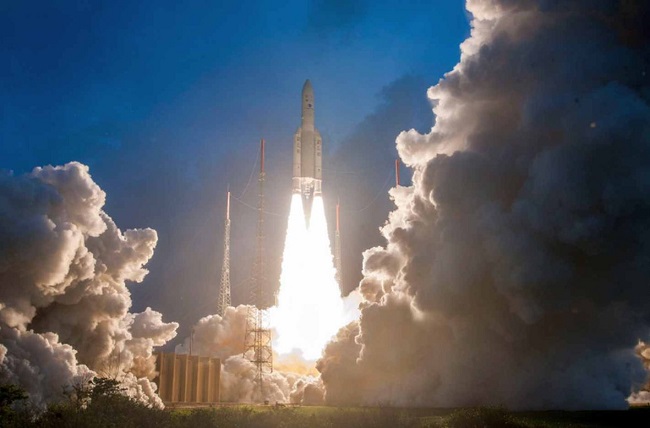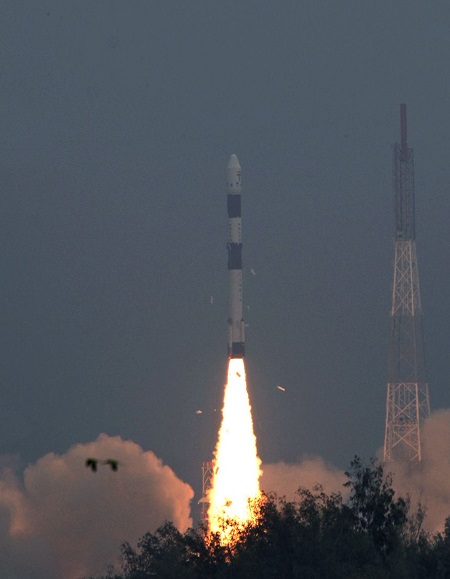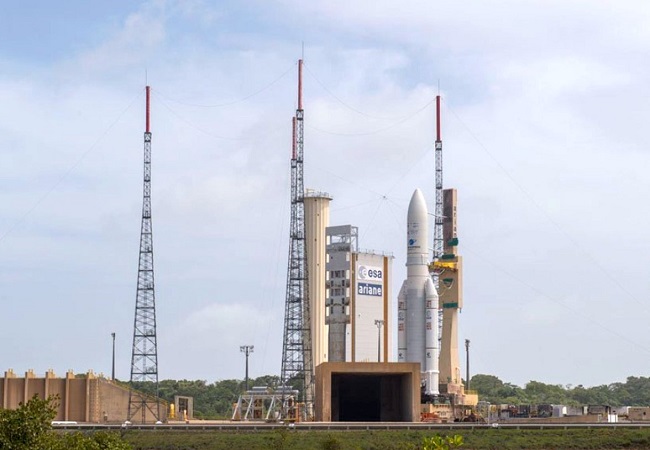ISRO successfully launches GSAT-11 communication satellite
The Indian Space Research Organisation successfully launched its heaviest and most-advanced high throughput communication satellite, GSAT-11, from the Spaceport in French Guiana in the wee hours of Wednesday.

Bengaluru: The Indian Space Research Organisation successfully launched its heaviest and most-advanced high throughput communication satellite, GSAT-11, from the Spaceport in French Guiana in the wee hours of Wednesday.
The launch vehicle, Ariane 5 VA-246, lifted off from Kourou Launch Base at 2:07 AM (IST) carrying India's GSAT-11 and South Korea's GEO-KOMPSAT-2A satellites. Ariane 5 is one of three launch vehicles operated by Arianespace along with Soyuz and Vega.
Also Read: ISRO launches GSAT-29 communication satellite
After a 30-min flight, the GSAT-11 detached from the Ariane 5 upper stage in an elliptical Geosynchronous Transfer Orbit, achieving an orbit very close to the intended one.
Also Read |
Ex-ISRO chief U R Rao Passes away at 85

The 5854-kg satellite will provide high data rate connectivity to users in the Indian mainland and islands through 32 user beams in the Ku-band and 8 hub beams in the Ka-band. GSAT-11 will boost the broadband connectivity to rural and inaccessible Gram Panchayats in the country coming under the Bharat Net Project, which is part of the Digital India Programme. Today's successful mission has boosted the confidence of the entire team," said ISRO chief Dr K Sivan.
He also said GSAT-11 will act as a forerunner to all future high throughput communication satellites.
Post-separation, ISRO's Master Control Facility in Karnataka's Hassan took over command and control of GSAT-11 and found its health parameters to be normal.
Also Read |
PM Modi: Saddened by demise of ex- ISRO chief UR Rao

Also Read: ISRO launches earth monitoring satellite
The scientists will undertake phase-wise orbit-raising manoeuvres in the following days to place the satellite in the Geostationary Orbit (36,000 km above the equator) using its onboard propulsion systems. The GSAT-11 will be positioned at 74-degree east longitude in the geostationary orbit.
Thereafter, the two solar arrays and four antenna reflectors of the GSAT-11 will be deployed into orbit. The satellite will be operational after the successful completion of all in-orbit tests. (ANI)
 Dynamite News
Dynamite News 